Image Archive












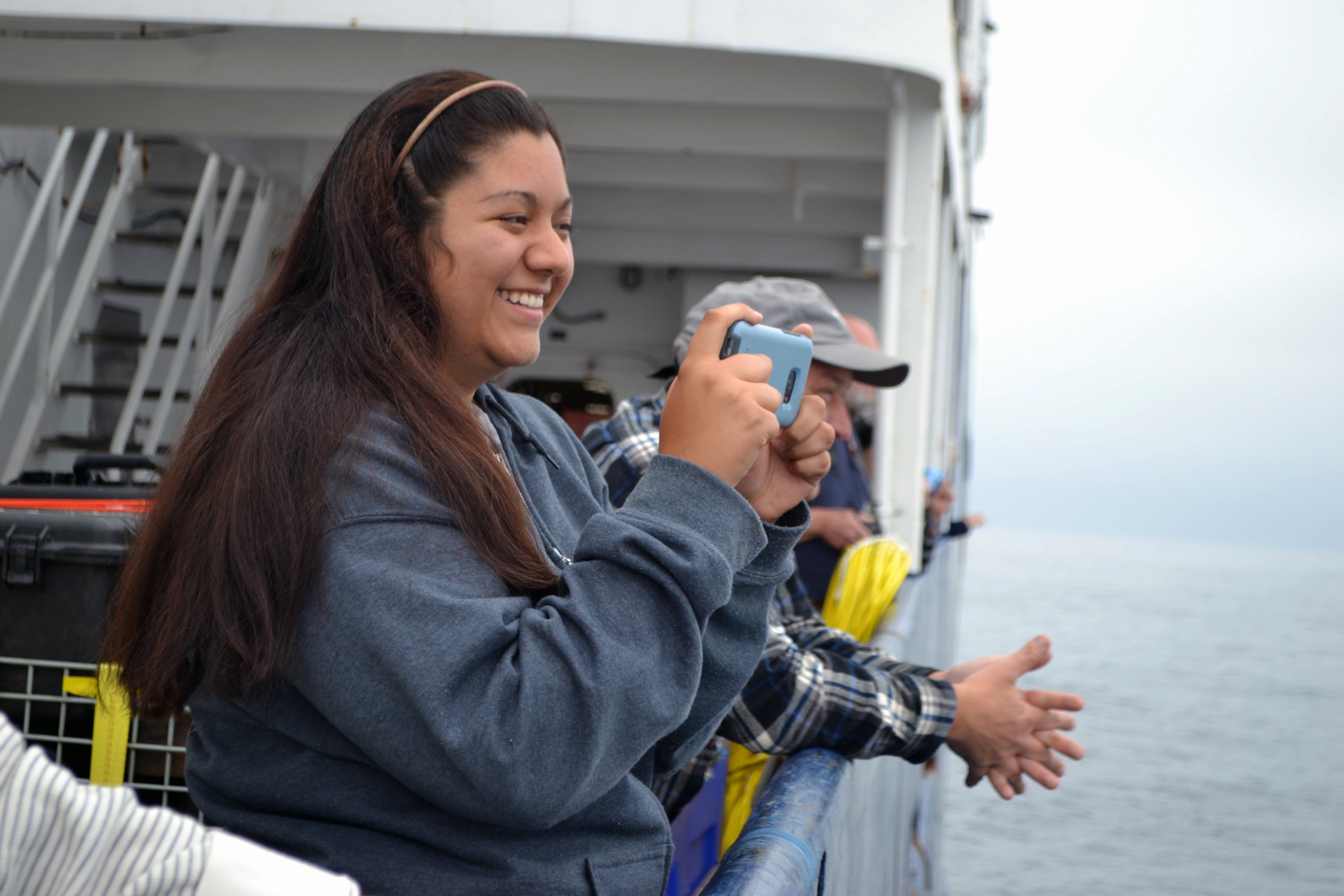
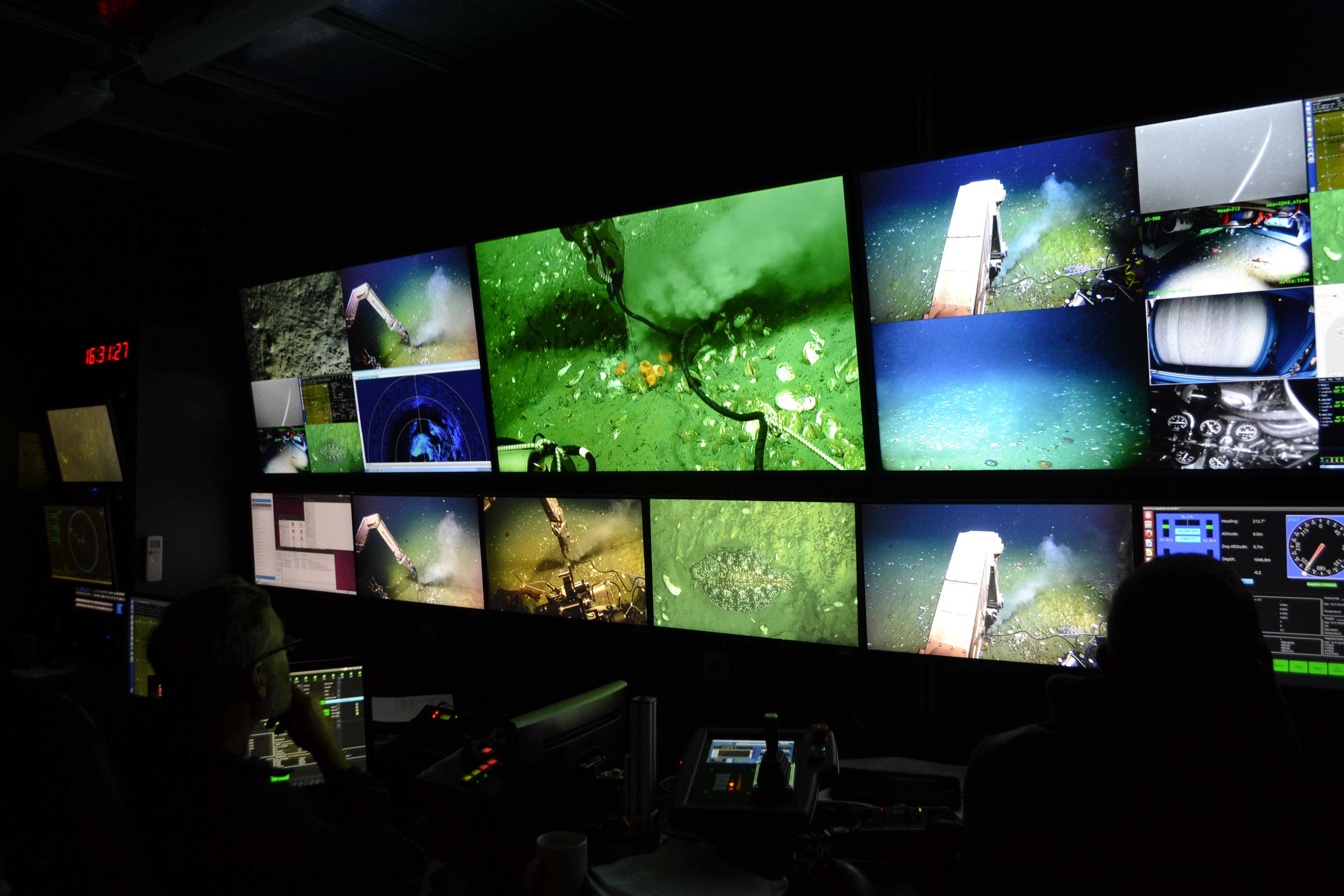







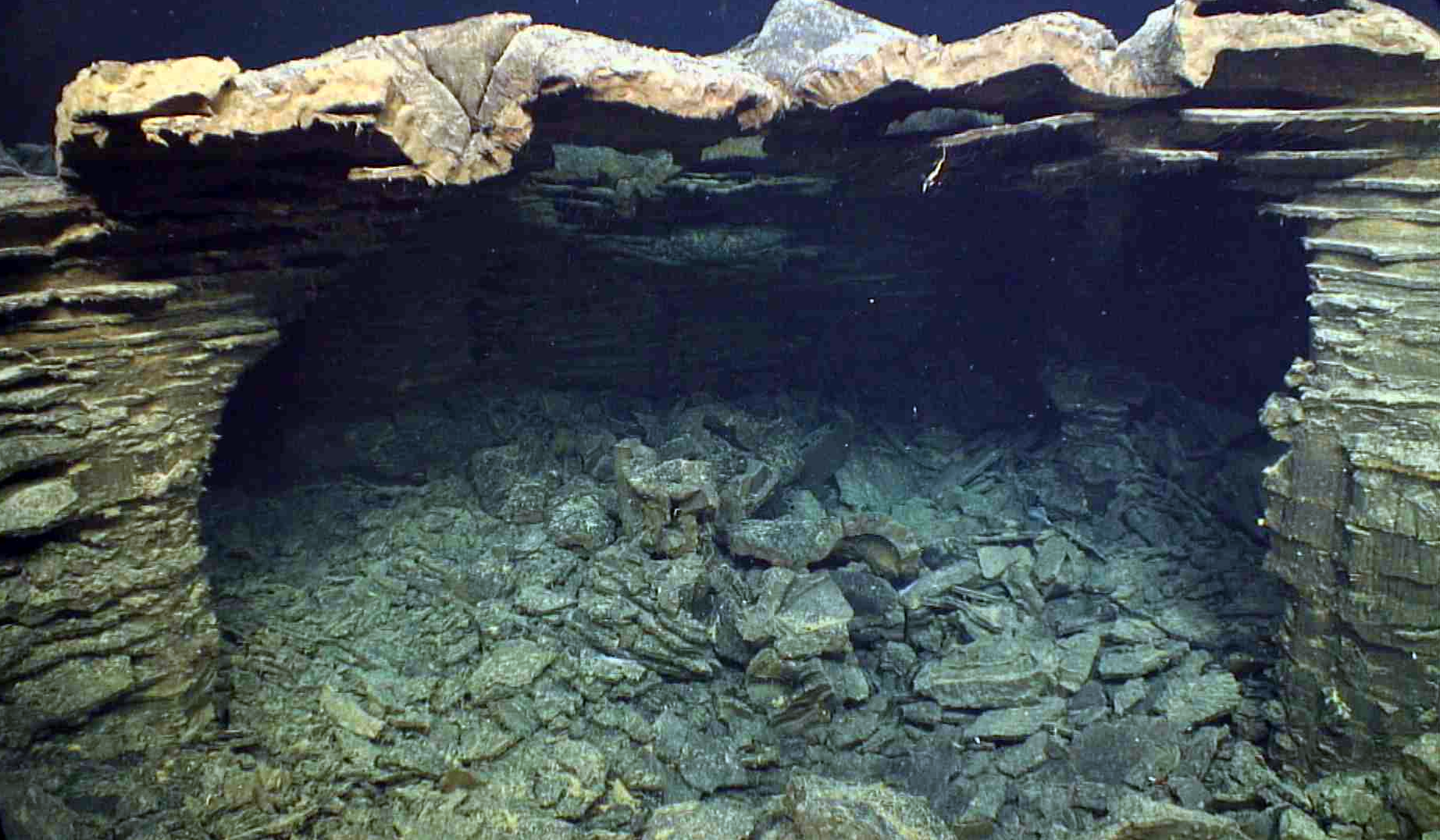



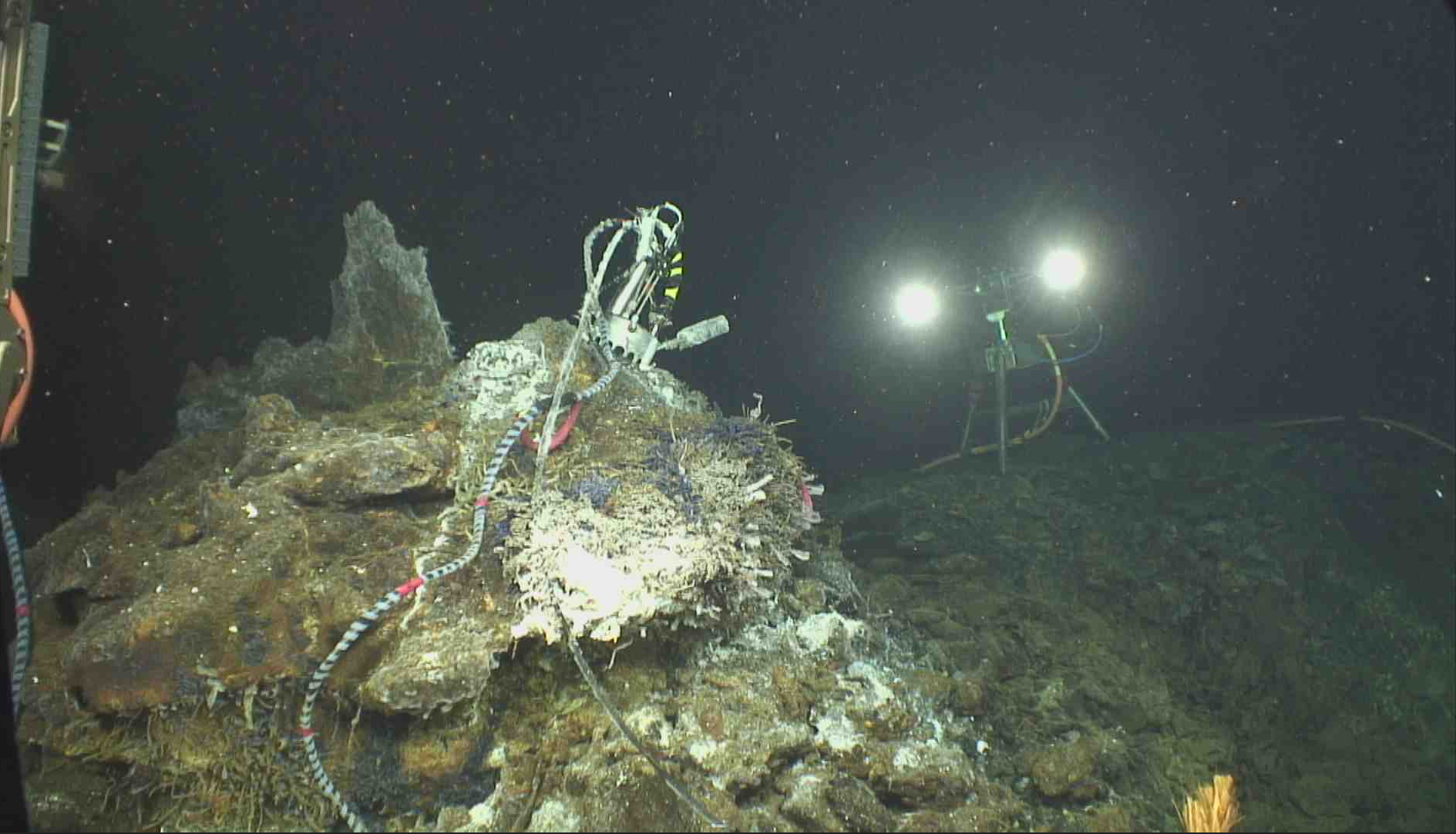
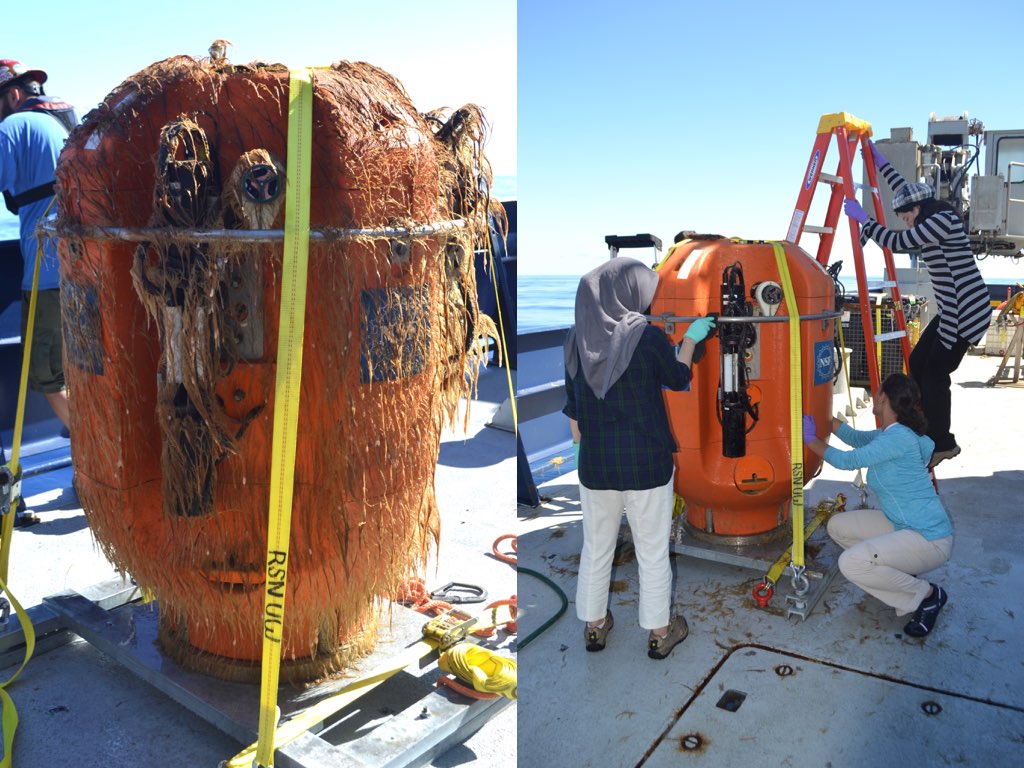


The R/V Revelle transits to Newport at the end of Leg 2 of the VISIONS'17 expedition. Credti: M. Elend, University of Washington, V17.

A "snow storm" of material in the shallow waters (80 m) off of Newport, Oregon prevented the ROV Jason from recovering and redeploying the Bethic Experiment Platform during the first two dives of the VISIONS'17 program. These waters are some of the most biologically productive in the worlkds' oceans. Credit: UW/OOI-NSF/WHOI; V17.

A view of the R/V Roger Revelle, operated by Scripps Institution of Oceanography, as viewed from a drone flown by Applied Physics Laboratory engineer, Chuck McGuire. Credit: C. McGuire, University of Washington.

A view of the inside of the Jason control van at the beginning of Leg 2. Jason is working on the a Benthic Experiment Package off of Newport Oregon. Credit: Z. Cooper, University of Washington, V17.

Hanis, Eve, and Monique prepare to disembark from the R/V Revelle at the end of the VISIONS'17 UW-OOI-NSF expedition. Credit: M. Elend, University of Washington, V17.

Two cranes operate to mobilize and demobilize the R/V Revelle between Legs 1 and 2 of the UW-OOI-NSF Regional Cabled Array operations and maintenance cruise. Several tons of equipment will be off- and on-loaded during the two days in port. Credit: M. Elend, University of Washington, V17.

The R/V Revelle comes into Newport, Oregon under misty-foggy skies at the end of the UW-OOI-NSF Regional Cabled Array operations and maintenance cruise. Credit: M. Elend, University of Washington, V17.

Undergraduate students from the University of Washington, University of Puerto Rico, and Queens College, New York gather for a last goodbye at the end of the UW-OOI-NSF cruise RR1713, Leg 1 of the Regional Cabled Array Operations and Maintenance Expedition.

A vew from a GoPro camera looking towards the fantail of the R/V Revelle near the end of the UW-OOI-NSF Regional Cabled Array. The ROV Jason has a novel holster on its front holding a Deep Profiler vehicle about to be installed on a Deep Profiler Mooring at the Oregon Offshore Site. This dive was the first to use this holster, designed by the Applied Physics Laboratory, which allows instrumented profilers to be recovered and reinstalled without recovering the entire mooring. Credit: University of Washington, V17.

University of Washington School of Oceanography undergraduate students, Katie Gonzalez and Willem Weertman document the Pythias Oasis dive. Credit: M. Elend, University of Washington, V17.

Katie Gonzalez, Eve Hudson, Alex Andronikides, and Kelsy Cain (in junction box) help clean the LV01C junction box that had been tipped on its side (still fully operational, however) for a few years at the Oregon Offshore Site. Credit: M. Elend, University of Washington, V17.

A large pod(s) of Pacific White-Sided Dolphins spent ~30 minutes frolicking adjacent to the R/V Revelle, ~60-70 km west of Newport, Oregon. Credit: S. Denny, University of Washington, V17.

Katie Gonzalez watches a large pod of Pacific White-sided Dolphins ~60-70 km west of Newport, Oregon. Credit: M. Elend, University of Washington, V17.

A diverse suite of displays allow monitoring of ROV operations in the control van during the dive to the Pythias Oasis Site discovered by, then, University of Washington School of Oceanography undergraduate Brendan Philp. The central large display shows the "Gusher" site, ringing by orange anemones and adjacent clams. The Jason manipulator holds a temperature probe used to measure the warm fluids. Credit: M. Elend, University of Washington, V17.

A beautiful ropey, jumbled sheet flow covers the seafloor at ~1500 m beneath the oceans' surface at the summit of Axial Seamount. The lava was erupted in April 2011. Credit: UW/OOI-NSF/WHOI; J2-980; V17.

Healthy tube worms grow along a venting fracture in the 2011 glassy lava flow at the summit of Axial Seamount. Credit: UW/OOI-NSF/WHOI; J2-980; V17.

A dense colony of tube worms awash in warm diffusely venting fluids grow on the April 2011 lava flow at the summit of Axial Seamount. UW/OOI-NSF/WHOI; J2-980; V17.

A small cluster of healthy Ridgeia tube worms grow near Skadis' Cauldron, a highly active snowblower in 2011. Credit: UW/OOI-NSF/WHOI; J2-980; V17.

A swarm of black cod circle the vehicle during recovery and installation of a junction box at 600 m water depth offshore of Newport. Credit: UW/OOI-NSF/WHOI; J2-986; V17.

Tubeworms with red plumes grow on the side of an odd basalt formation formed as part of a fossilized lava lake at the summit of Axial Seamount in 2011. Depth is ~1500 m. UW/OOI-NSF/WHOI; J2-980; V17.

A skylight in the April 2011 lava flows shows where lava had drained out in the subsurface, leaving a cavern. The front porch of the ROV Jason is in the foregound. UW/OOI-NSF/WHOI; J2-980; V17.

The ROV Jason looks into the remnants of where a lava pond once formed. Most of the roof has subsequently collaped. Water depthe here is ~ 1500 m. UW/OOI-NSF/WHOI; J2-980; V17.

A fossilized whirl in a lava lake that was active during the April 2011 eruption of Axial Seamount. Credit: UW/OOI-NSF/WHOI; J2-980; V17.

During Jason Dive J2-980, the remnants of multiple lava lakes from the April 2011 eruption of Axial Seamount were encountered. The bathtub rings mark the progressive lowering of the "lake". Credit: UW/OOI-NSF/WHOI; J2-980; V17.

Columns in a collapsed area that once hosted a lava lake are reminiscent of an ancient city. Rings mark lowering of the lake as lava drained out. Fossilized drips of lava are preserved hanging from the ceiling. A rattail fish explores the site. This is part of the 2011 eruption at Axial. Credit: UW/OO-NSF/WHOI; J2-980; V17.

The Cabled Array digital still camera in the International District Hydrothermal Field photographs Jason during dive J2-980. Credit:UW/OOI-NSF/WHOI, V17

This science pod was cut loose from the Axial Base Shallow Profiler mooring on Sunday morning and was throughly cleaned by an eager group of students. The growth visible on the pod comes after just one year in the water, and since many of the instruments on the pod require unobstructed intake lines for sampling, the pods must be replaced yearly.

Katie Gonzalez, from Clallam Bay, will be a freshman at the University of Washington Fall 2017 where she will study Oceanography and work with Deb Kelley. Here, she is cleaning an Acoustic Doppler Current Profiler recovered from 2900 m water depth at the Slope Base site. Credit: M. Elend, University of Washington.
- Anemone
- Animal
- Arthropod
- ASHES
- Axial
- Axial Base
- Axial Biology
- Axial Caldera
- Bacteria
- Basalt Lava
- BEP
- Biofouling
- biolgoy
- Biology
- Camds
- Camera
- Camhd
- Central Caldera
- Ciliates
- Cnidaria
- Coastal Biology
- Crab
- Deep Profiler Mooring
- Dive Highlights
- Eastern Caldera
- Echinoderms
- Endurance Array
- Engineering Team
- ENLIGHTEN 10
- Exploratorium
- Fish
- Geology
- HD Camera
- HPIES
- Hydrate Ridge
- Hydrates
- Hydrophone
- Hydrothermal Vents
- Illustration
- Inshore 80 Meters
- Instrument
- International District
- J-BOX
- Jason
- Jellyfish
- Junction Box
- K12
- Lava
- Mollusk
- Moorings
- Nodes
- Nudibranch
- Octopus
- OOI
- Oregon Offshore
- Oregon Offshore 600 m
- Oregon Shelf
- Oregon Slope Base
- People
- PN1B
- PN1D
- Polychaetes
- PPSDN
- Primary Node
- RASFL
- ROCLS
- ROPOS
- ROPOS Dives
- ROV Team
- RV Revelle
- RV Sikuliaq
- RV Thompson
- Salp
- Sample
- SC13
- Science Team
- Sea Cucumber
- Sea Star
- Sea Urchin
- Seafloor
- Seismometer
- Sensors
- Shallow Profiler Mooring
- Shark
- Shipboard
- Shore Station
- Slope Base
- Smoker
- Soft Coral
- Southern Hydrate Ridge
- Sponge
- Squid
- Students
- Students & Guest Participants
- Tmpsf
- Tubeworms
- VISIONS 11 Leg 1
- VISIONS 11 Leg 2
- VISIONS 11 Viewers
- VISIONS 13
- VISIONS 14
- VISIONS 15
- VISIONS 16
- VISIONS 17
- VISIONS 18
- VISIONS 20
- VISIONS 22
- VISIONS 23
- Visualization
